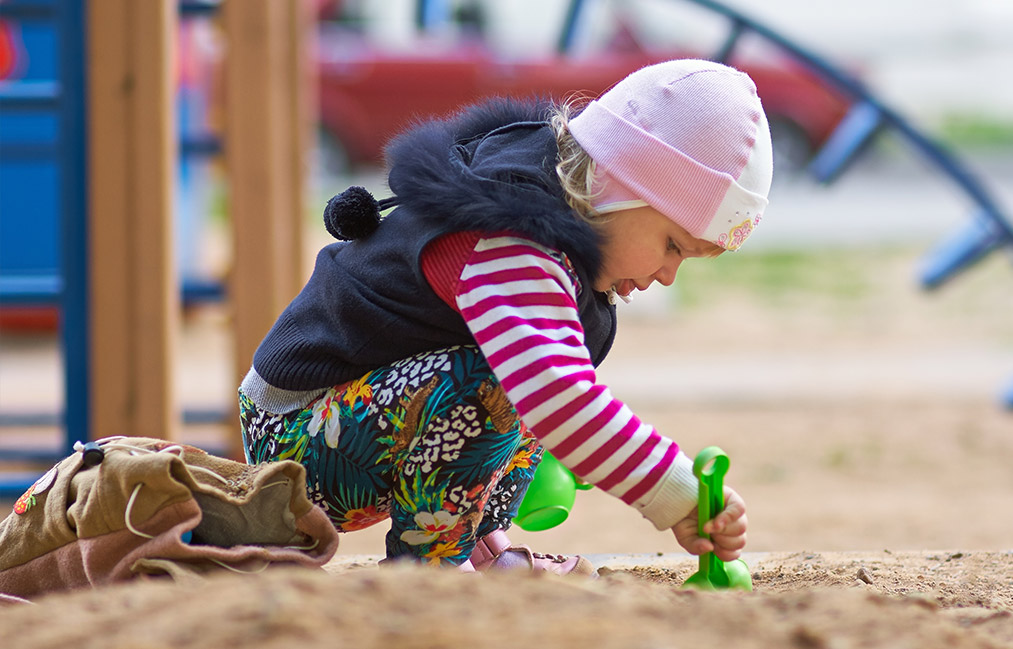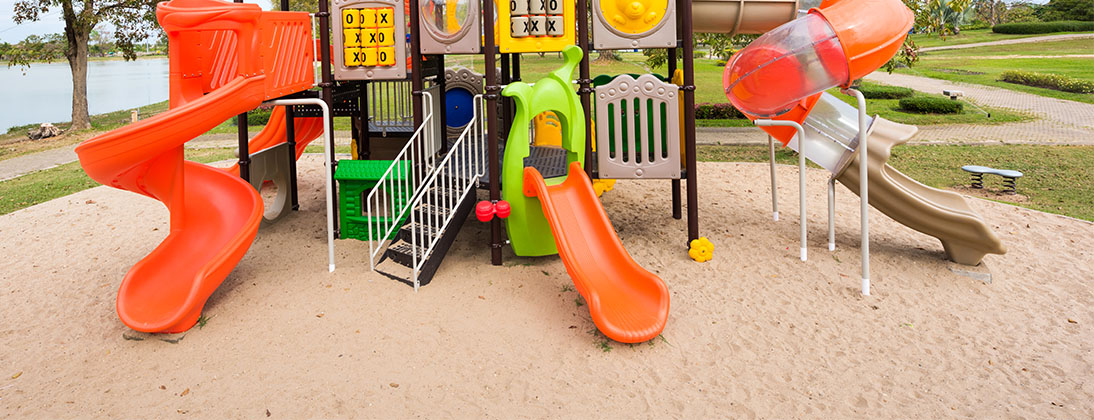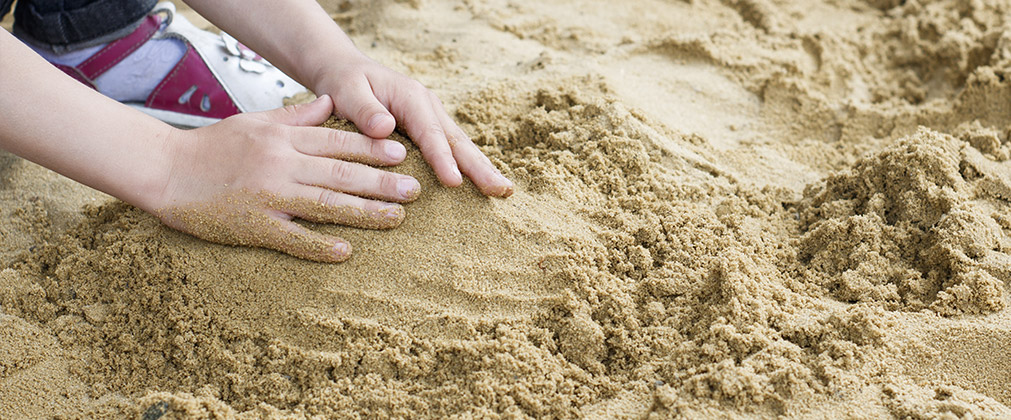Playground Sand
Sand is a loose-fill surfacing material that was a staple in the commercial playground industry for many years. Since the ADA issued their Standards for Accessible Design in 2010, however, sand is no longer allowed for use on public and commercial playgrounds. It is still used as a surfacing option for home playgrounds, so we have included the information below.
Evaluation Criteria
Learn more about the details of the evaluation criteria.
Safety
Cleanliness
Care & Maintenance
ADA Compliance & Accessibility
Aesthetics & Design
Installation Cost
Lifetime Cost
Sand
Safety

Safety Rating:
From an impact resistance point of view, sand surfaces can be designed to meet the ASTM standards for many fall heights, but many varieties will compact significantly over time minimizing their impact absorbing qualities.
- Does not support microbial growth
- Can hide dangerous foreign objects
- High humidity and cold temperatures reduce its effectiveness
- Can be thrown or scattered onto nearby walkways and surfaces causing slipping hazards

Sand
Cleanliness

Cleanliness Rating:
While few will dispute the joy of a day at the beach, sand is generally not considered to be the cleanest material option for playground surfaces. Kids love to play in the sand and consequently get it all over their bodies, in their shoes and pockets. It then gets tracked into buildings, homes and onto furniture.
Some people even complain that neighborhood cats tend to use the sand as a litter box. Still, it does have some positive attributes.
- It does not stain clothes
- It does not support bacteria, mold and mildew growth
- Like all loose fill materials, it can be scattered about

Sand
Care & Maintenance

Maintenance Rating:
Keeping sand depths high enough to comply with fall height requirements requires constant raking and leveling. The sand also needs to be inspected for debris and compacted sand needs to be sifted to keep its impact absorbing qualities active.

Sand
ADA Compliance & Accessibility

Accessibility Rating:
Sand Does Not Meet ADA Requirements for wheelchair accessibility and consequently should not be used on commercial or public playgrounds.

Sand
Aesthetics & Design

Aesthetics Rating:
While sand certainly is appealing for creating a beach-like playground area, this look can be hard to maintain after it is installed. As the sand becomes littered with leaves, sticks and other foreign objects, more raking is required to keep the sand clean. As with all loose-fill materials, sand can also present issues with being scattered outside of the play area onto walkways, ruining the aesthetic of a well-manicured playground.

Sand
Installation Cost

Installation Cost Rating:
Installation costs for sand are comparatively low considering the widespread availability of the material and relatively simple installation process. Once the area is prepared, one only needs to dump the material and rake to the necessary depth.

Sand
Lifetime Cost

Lifetime Cost Rating:
The lifetime cost for using sand as a surfacing material can end up being somewhat high due to the frequent maintenance and material replacement. In addition to the ongoing maintenance involved with inspecting the sand for foreign objects and raking to maintain a consistent depth of material, it must be “topped off” with additional material and completely replaced occasionally.


